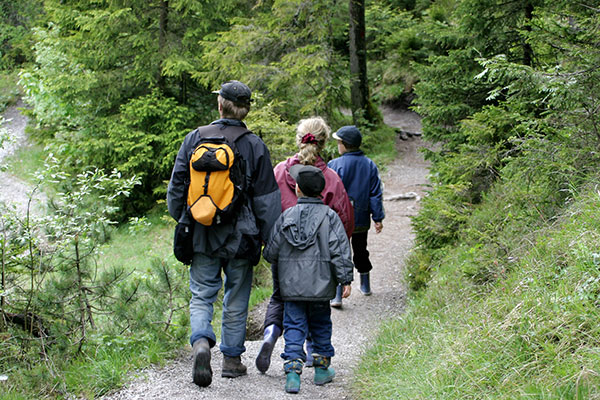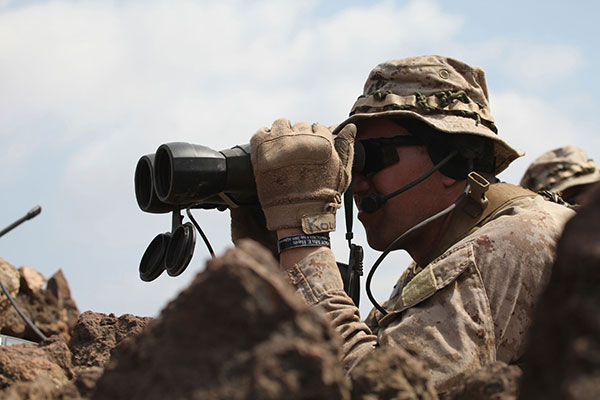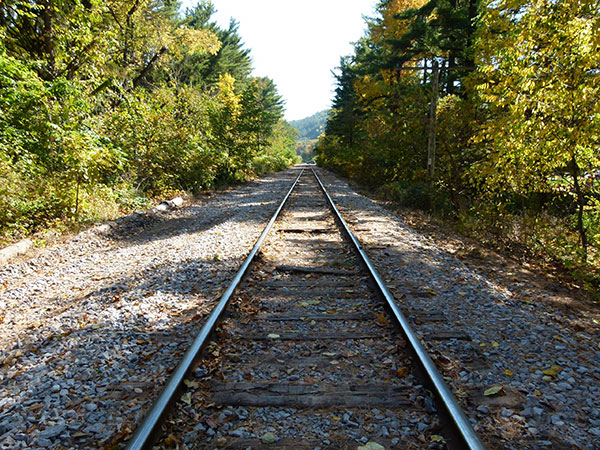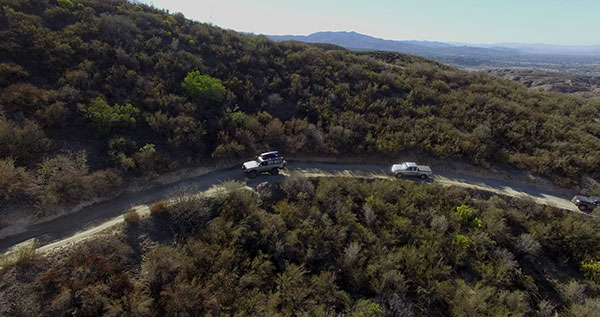SDN has moved again!
Subscribe to our RUMBLE channel

Integrating Primitive and Modern Bugout Strategies
Survivalists operated from the Rawlsian paramilitary group paradigm for decades. They based group bug out strategy and tactics on what they knew, which was the US Infantry Squad. The Infantry Squad Model has fighting fit soldiers humping packs weighing upwards of 100 Lbs and isn’t a great fit for the average prepper.
 This model and your bug out will break down in short order if you throw a 120 lbs pack on a guy who works a desk job, his wife, 2.5 kids, grandma, and his golden retriever.
This model and your bug out will break down in short order if you throw a 120 lbs pack on a guy who works a desk job, his wife, 2.5 kids, grandma, and his golden retriever.
The problems don’t stop there either. Survivalists have different group makeup, missions, and goals than the military. Survivalists trying to survive more often achieve this end by avoiding combat. The military’s objective is typically to take and hold ground to one end or another.
The US military is dependent on a superpower class logistics infrastructure with half a dozen personnel in the logistics tail for every soldier at the tip of the spear. Survivalists simply cannot duplicate this in any meaningful way.
The glaring issues with my field’s accepted best practices send me back to the drawing board. I found that small indigenous nomadic groups the world over are similar in strategies, tactics, objectives, and have nearly identical group makeup as survivalists.
I ended up blending modern tactics with primitive strategy and tactics to adopt a hybrid primitive/modern model. This combines the most effective aspects of each. There was no sense throwing out modern combat tactics and equipment as they port over to survival with minor modification.
Fast & Light Scout/Security Element
Most cultures I studied divided their group into a lighter, faster, better armed scout/security element and a slower moving supply train. The most fighting fit folks go into the former and grandma, the kids, and the golden retriever go into the latter. The slower group often uses travois, handcarts, pack animals, wagons, etc., to tow grandma and the supplies along. This allows them to go at a slower, more realistic pace.
 The scout/security element forges ahead and clears the way for the main body, leaving trail signs for them to follow. If they encounter enemy forces, a small reconnaissance team surveys the enemy from a distance. Ideally they go unnoticed and the bulk of the element leads the main body away in another direction. Hopefully, safely bypassing the threat. When the security element does engage the enemy the aim is typically to harass and distract them. They’ll draw them away from the main body then use speed, mobility, and small size to slip away.
The scout/security element forges ahead and clears the way for the main body, leaving trail signs for them to follow. If they encounter enemy forces, a small reconnaissance team surveys the enemy from a distance. Ideally they go unnoticed and the bulk of the element leads the main body away in another direction. Hopefully, safely bypassing the threat. When the security element does engage the enemy the aim is typically to harass and distract them. They’ll draw them away from the main body then use speed, mobility, and small size to slip away.
Slower Moving Main Body Element
The main body moves supplies, wounded, infirm, and members of the group who are outside the military age range. They do this using mechanical advantage to carry more weight at a slower pace. The main body is more lightly armed and follows behind the security/scout element, interpreting trail signs then scattering them.
In some cultures, the main body steps into the footprints of those ahead of them to conceal their numbers and confine spore to a smaller area.
Rapid Reaction Force
If the group is large enough in size, then scout/security element often benefits by further dividing. It can be divided into scout/security and a separate rapid reaction force which responds when the scout element contacts enemy forces. The role of the reaction force is typically to hit the engaged enemy in the flank. This allows the security force to break contact whereupon both forces exfiltrate the area in different directions. If one force gets into trouble, the other can return.
Bugging Out on Foot
Foot travel is the most reliable form. If you have feet, you’re in business. Foot travel should be planned even if Plan A is to travel by vehicle. Every member should be prepared to Escape & Evade (E&E) their way to a rendezvous with other survivors at hole-up sites. These sites should have cached supplies and be along the bug out route.
Tactics for Bugging Out on Foot
– Point – Experienced scout/trackers should walk point, reducing exposure of the scout/security element and the group. Each element should have both lead and rear security.
– Cat’s Paws – The point man, scout/tracking element, or even the entire group can employ felt soles worn over boots to minimize visual sign. This enables them to virtually disappear on some types of terrain, especially as far as the average citizen is concerned.
– Walk Ranger File – Walking with spaced intervals between each member of the group reduces exposure to attack. If a column walks with 2m between each member and a grenade explodes on the trail, multiple fatalities could result. If they’re spaced at 20m apart it’s likely that only one would be injured. Intervals can be adjusted to between 10m and 100m depending on the terrain.
– Rear Guard – A rear guard polices the trail for signs, provides security, and guards against attack from the flanks.
– Improvised Munitions/Booby Traps/IED’s – Few things demoralize and slow down an enemy like booby traps. When quickly and expertly deployed, booby traps can buy time and create wounded for the enemy to carry.
Lines of Drift & Choke Points
Lines of drift are paths of least resistance that people tend to walk along. Travel expends energy, so people and animals alike tend to take the path of least resistance.
 Traveling along lines of drift makes people vulnerable to ambushes, booby traps, and IEDs. Bodies and wreckage will pile up along lines of drift in time of conflict.
Traveling along lines of drift makes people vulnerable to ambushes, booby traps, and IEDs. Bodies and wreckage will pile up along lines of drift in time of conflict.
Examples of Lines of Drift
- Roads & Highways
- Rivers, Canals, & Lake Shores
- Logging Roads, Trails, & Game Trails
- Railroad Tracks & Lines
- Mountain Ridges
- Mountain Valleys
- Fence Lines & Hedge Rows
Bugging out on foot enables groups to leave main lines of drift where ambushes are most common. Criminals or enemies won’t waste time and resources manning ambushes in the middle of nowhere.
Choke points are geographical features where lines of drift merge to pass some type of obstacle. This can be narrow mountain valleys, passes, or bridges. Choke points and intersections of key arteries of transit are also ideal places to set up ambushes. As you plan bug out routes make sure to check choke points and other likely ambush spots so they can be avoided.
Night Travel on Foot
Night travel on foot using night vision and thermal imaging enables groups to detect others at a distance. The assess their strength and intent to make better informed decisions. Provided others aren’t similarly equipped, night vision and thermal imaging technology is an effective force multiplier.
Leave Early
Normalcy bias, analysis paralysis, and lack of preparation combine to slow the unprepared. This gives prepared groups an edge when the time comes to bug out. By hitting the trail or road while others are still packing, your group can avoid checkpoints and ambushes. Criminals and law enforcement alike will establish them once people realize the gravity of the situation.
Roadblocks were established in the aftermath of Hurricane Katrina. Roads were blocked by parishes that feared that a great horde of refugees would plunder their homes, overwhelm local infrastructure, and spread disease. They barricaded hurricane victims inside a flooded New Orleans.
Bugging Out by Vehicle
Bugging out by vehicle may go smoothly if you leave soon enough. Traveling by vehicle will be risky once the populace realizes the situation they are in travel. A large group mitigates some of the risks but also gives others time to react. Plus it won’t easily slip though unnoticed, especially if few vehicles are on the road.
Keep in mind that convoy tactics and vehicle modifications offer solutions to many problems encountered while bugging out by vehicle.
Rethink Driving Straight Through
Reality will set in for the general populace that they’re in a large scope, long duration, grid down survival scenario. Then roadblocks will be put in place and cities might isolate themselves. Once this happens, a straight drive through to your destination is unlikely. Every city you roll through will represent potential problems.
 Intelligence must be collected. Much of this will probably happen by radio. Your group will have to contact people in every town along the route or at least those who have recently passed through (learn about building a prepper group). This will give you a better understanding of road conditions.
Intelligence must be collected. Much of this will probably happen by radio. Your group will have to contact people in every town along the route or at least those who have recently passed through (learn about building a prepper group). This will give you a better understanding of road conditions.
When approaching towns where the condition is unknown, you may decide to stop. Set a camp and probe the airways to ascertain what conditions are like. If someone is shot with a modern rifle in austere conditions, then chances are that they’ll die. Take the long way around as it will often be the safer course of action.
Vehicle Modifications to Consider for Large Groups
– Communications – Communications in large groups is extremely important. This should include direction finding equipment for a large group.
– Armor
– Blackout Switch – Blackout switches turn off all visible lighting and make a vehicle less of a target at night.
– Convoy Lighting – Shrouded lighting that’s only visible from in front of or behind the vehicle at relatively close range. This helps camouflage the convoy while still making vehicles visible to one another to prevent accidents. Plus vehicles can see when a member stops or leaves the roadway.
– Identification Friend or Foe (IFF) – Members of the group need to be able to tell each other and their vehicles apart from enemies with just a glance.
– Crew-Served Weapons
– Fire Fighting Equipment
– Medical Kit
– Cable Cutter or Ramp – A cable cutter or ramp is designed to mitigate risk from cables stretched across roadways. They push the cables harmlessly over the vehicle or cut them. Thin cables are strung to decapitate enemies riding in open vehicles or on motorcycles. They can be extremely difficult to spot at speed. Thicker cables are sometimes employed diagonally across roadways to carry vehicles over the edge of cliffs. Sometimes several vehicles fall victim to the same trap.
– Tow Hooks
– Run Flat Tires – Run flat tires are designed to keep vehicles rolling at low speeds until they’re out of the kill zone.
– Extended Range Fuel Tanks
– Extra Full-Size Spare
– Covert & Overt Camouflage – There are times when overt camouflage is necessary and times when it will get you shot at first. Just like choosing clothing, convoy vehicles can be painted in low glass earth tones capable of blending into a natural setting. Elastic bras front and rear can quickly cover reflective or shiny surfaces. Multispectral camouflage hides vehicles while maintaining a nondescript overall appearance.
Final Thoughts
Having a group greatly increases resources and capabilities during a survival situation. They also have a tendency to draw more attention. It’s important to have a plan so that everyone understands their roles, especially when moving as a group. Some planning and simple modifications can be done to avoid unnecessary attention and the danger it brings.
– Tribes of Native Americans, pioneer handcart, wagon train companies, and nomadic cultures the world over have solved the same security and load bearing problems faced by survivalists today. The best way is to break up groups into scout/security and main body elements.
– Bodies pile up along lines of drift and at choke points like bridges in conflict. Stay off lines of drift if you want to keep your group alive.
– Probing towns by radio is safer for groups than on foot.
– Take advantage of the fact that the sheeple will be in analysis paralysis. Get out of Dodge before they recover. Your group may arrive at its destination before roadblocks and ambushes pop up.
This article was originally written by Adrian Willis and published in Survival Dispatch Insider magazine Volume 2 Issue 1.
=====
Become a Survival Dispatch Insider …
We bring together survival enthusiasts and preppers to share skills and knowledge, so you can enhance your preparedness for emergencies and ensure the safety of you and your community.
The Results You’ll Get …
Our community, courses, and memberships are pretty special. We focus on the ways it will make a huge difference in your life.
Here are a few of the things you’ll be able to do as a member of Survival Dispatch Insider …
1) Improve your emergency preparedness by learning survival skills and strategies from experienced preppers.
2) Build lasting connections with like-minded individuals that share your passion for safety and readiness.
3) Access a wealth of knowledge and resources to assist in protecting you and your community during unexpected situations.
Click HERE to get started.
=====
